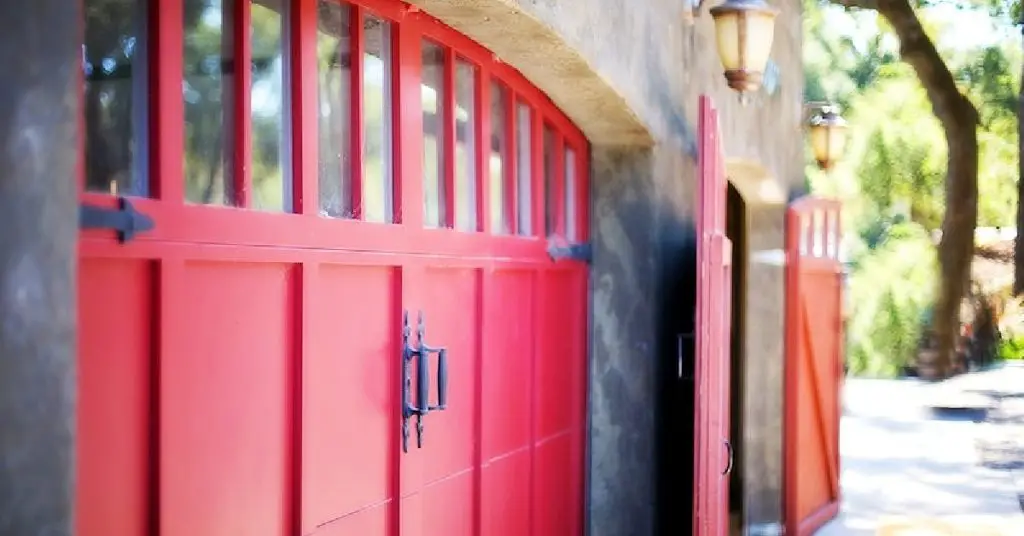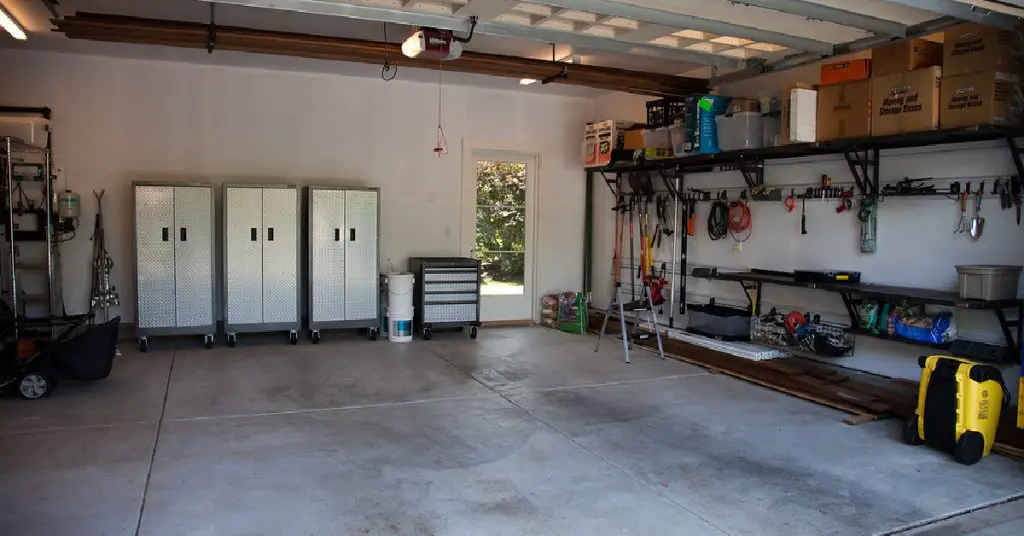If you have a garage, you probably use it regularly. For most people, their garage is their personal space. It’s where they store their cars and tools, and it’s also where they work on projects. Unfortunately, many people don’t realize that their garage floor is also a potential danger. The floor is often slippery, and accidents can happen quickly. Using an anti-slip garage floor surface can not only provide a safer garage but also make the garage more usable in wet and snowy weather. Fortunately, there are a variety of options for achieving this goal. This article will explain how to make garage floor less slippery using different methods.
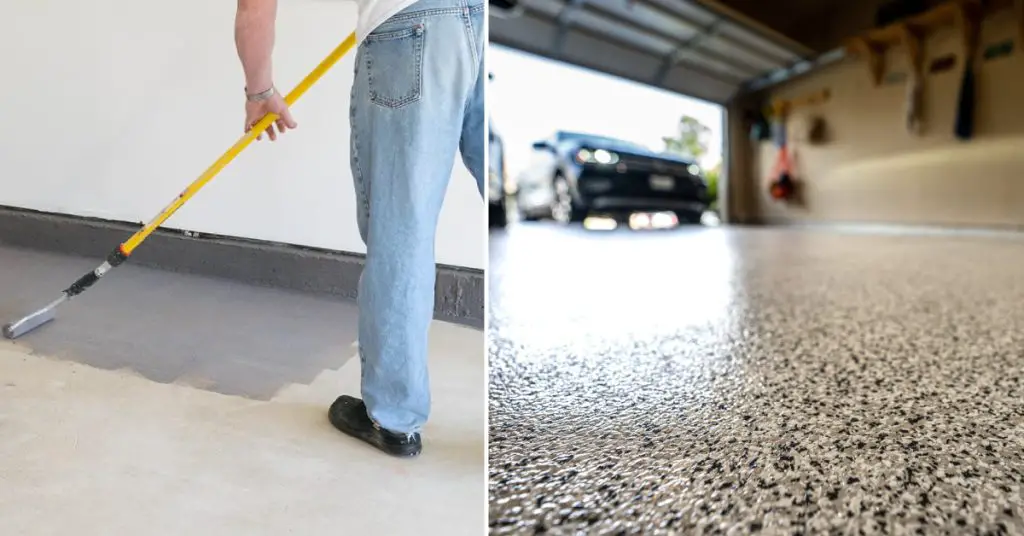
Why You Should Make Your Own Garage Floor Less Slippery?
Slippery is dangerous. Slip-and-fall accidents kill thousands of people each year and injure thousands more. According to the National Safety Council, preventing these accidents is the top priority. Experts say the first step to making your garage floor less slippery is to make the surface more resistant to slips. April Chambers, lab manager at the University of Pittsburgh’s Human Movement and Balance Laboratory, says that the main goal is to increase the amount of friction available. That’s why you should make your own garage floor less slippery to save life or prevent injuries.
What Makes the Garage Floor Slippery?
A slippery floor is an issue that can be dangerous for the people walking on it. Slipperiness in a garage is caused by a number of factors. Often, a garage floor made of concrete is chipped, and chunks of asphalt may be missing. This problem can occur due to many reasons, including dirty floors and improper cleaning techniques. For example, too much water can swell laminate floors and make them more slippery. Other causes of a slippery floor include wax residue, grease, and soap residue. Regularly sweeping and dusting can help prevent slipping. The concrete floor is also subject to oil and water, which are known to make any floor slippery. These issues can result in slips, falls, and possible injuries.
You Can Check It Out to Apply Polyurea Garage Floor Coating
10 Simple Solutions for Making Your Garage Floor Less Slippy
There are a variety of quick fixes and long-term solutions to make your garage floor less slippery. Those DIY solutions can easily fix the problem of a slippery garage floor.
Solution 1: Start With a Clean Surface
Before you begin your garage floor less slippy project, it’s essential to clean the floor surface. The garage surface can easily become dirty over time. To avoid this, you can use a walk-off mat or a big doormat to help prevent dirt from tracking into the garage. Then, use a broom to sweep away debris and prepare the surface for water and detergent. Before you start sweeping, you’ll need to remove dust from the surface. While this step doesn’t require special tools, you should wear protective gear and a dust mask. After sweeping the floor, apply a degreaser to it. This product works well on a concrete floor and should be mixed with water. After that, you’ll need to rinse it with clean water.

Solution 2: Anti-slip Coatings
Anti-slip coatings can improve the grip of an epoxy floor. Anti-slip coatings for garage floors can reduce the likelihood of accidents and injuries. These coatings are particularly useful for garage floors that are exposed to snow and ice. These coatings are also able to reduce lost time due to accidents. You can choose from several different types of anti-slip coatings. Some products are self-priming, which makes the application process easier. If you choose to apply an anti-slip coating, make sure you follow the instructions carefully. Some of them contain aluminum oxide, which provides a better grip in wet conditions. When applying the anti-slip coating, make sure to cover the entire surface.
Safety Seal is another type of non-slip coating for concrete floors. This non-skid coating is easy to apply and is available in a variety of colors. It’s an excellent option for inside concrete floors and provides long-lasting non-slip protection. A 5-gallon pail will cover up to 1,000 square feet. It is made of a resin co-polymer and aggregate and is easy to apply with a squeegee.
Solution 3: Rubber Drainage Mats
Rubber drainage mats for the garage floor are an excellent way to make the floor safer and less slippery. The textured surface is designed to absorb spills and debris, and they can be cleaned easily with a hose or vacuum cleaner. Many customers have their mats custom cut to fit their garage floor. They are also an excellent option to protect the floor beneath potted plants. These mats have three main uses:
- The first is to prevent slipping and tripping, and the second is to keep the garage floor dry. In the winter, containment mats are ideal for preventing your garage floor from becoming slippery. They are effective at collecting water, deicing fluids, and road salt. This keeps the floor dry, and the mats can be stored away until the next winter season.
- The other reason to buy garage floor mats is that they help you to maneuver in tight spaces and avoid bumping into things. These mats do not come in a set, but many customers find that one is sufficient to guide them around. You may want to purchase wall protectors, too, if your garage is located in a cramped space.
- Another important feature of traction mats is that they are strong and durable. They are designed to keep the floor from becoming slippery, so you can safely park your car on them and use them for heavy workbenches. They are also cheap and eco-friendly. The best part is that these mats can be recycled and made into anti-skid flooring.
These mats can be installed in minutes, and they can cover the entire surface of your garage floor and even under your car. They are easy to clean, and they can protect the garage floor from spilled liquids. However, they can be easily damaged by sharp objects or hot temperatures, and they are very slippery when wet. Therefore, these mats are not recommended for humid climates.
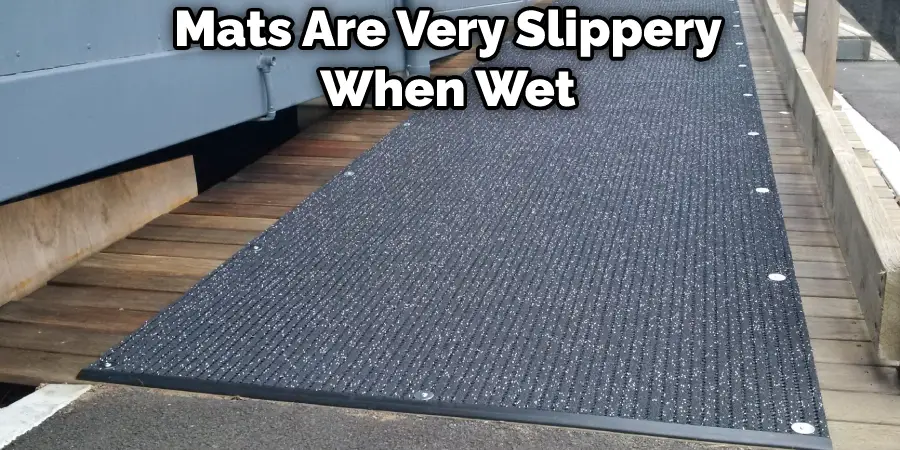
Solution 4: Self-draining Tiles
Self-draining tiles are a great way to make your garage floor less slippery. They have a flexible base made from PVC, and are lightweight, weighing 5.6 pounds per tile. They also have a hidden interlocking system that prevents coverage loss. The PVC base is attached to a grit top layer, which makes them durable and slip-resistant. These tiles are 1 inch thick and are perfect for garage floors. Self-draining tiles are an excellent choice for outdoor garages. They allow water to drain away while still providing extra traction. They are also available in perforated varieties. You can also find grittier options, such as Safety Grit Top Matta Perforated Black Tile, which is a great choice for commercial settings. This tile is durable, offering a 5-year limited manufacturer warranty. It is also highly resistant to stains, and the grit will help keep your garage floor dry and safe.
One of the most important features of a garage floor tile system is the ease of use. If it’s too complicated for you to install, it might not be the best option. Check for reviews and find out how easy the tiles are to install. If they don’t seem easy to install, you might want to look for another type of tile. If you don’t want to spend a lot of money on a new garage floor, you can purchase self-draining tiles instead. This type of tile is designed for garages and provides the best traction on the floor. Self-draining tiles are also easy to install and do not require time to cure. Moreover, self-draining tiles are easy to replace if damaged or worn out. The installation process only takes a few hours, and you do not need to be an expert. Self-draining tiles also make a “click clack” sound when walked on.
Solution 5: Non-slip Treads
A slippery garage floor is a safety hazard. This is especially true when you have groceries to unload or your hands are full. You can reduce this hazard by changing the texture of your floor. To do this, you can purchase supplies at home improvement stores. To make your garage floor less slippery, you can use an anti-slip sealer and non-slip additives. These are available in coarse and fine varieties and have different effects on different surfaces. Grit additives help increase grip and are generally used in wet areas with heavy foot traffic. An epoxy coating is another option for making your garage floor less slippery. It is a non-porous material that contains a small amount of natural texture. The coating can be further enhanced by adding quartz beads or color chips.
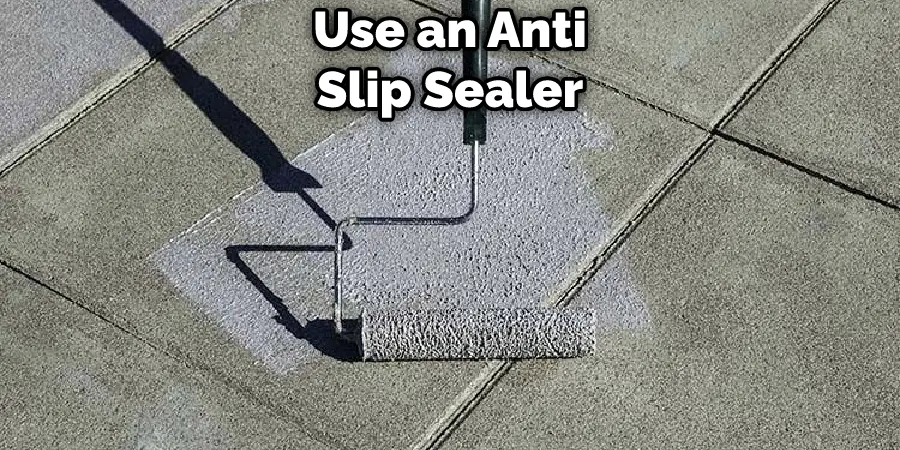
Solution 6: Epoxy Paint
The use of epoxy paint to make your garage floor less slippery is a great way to increase the safety of your garage floor. Compared to bare concrete, the coating has an attractive showroom appearance and is stain-resistant. It also makes cleaning the floor much easier, since it doesn’t soak into the floor as bare concrete does. Lastly, it hides imperfections like hairline cracks in the concrete. You can buy epoxy paint at home improvement stores or online retailers. Some types are more expensive and work better than others. If you’re applying epoxy by hand, consider using a paintbrush rather than a roller, as this method will leave brush strokes in the coating that will add extra traction.
Solution 7: Epoxy Flooring
Whether you use your garage for storing heavy tools or as a simple place to keep your car, epoxy flooring is a great way to make your garage floor less slippery. These floors come in many colors and patterns. They add a flawless shine to any surface, and you can arrange them in traditional or custom patterns. These floors will also improve your garage’s visibility. The coating that makes epoxy flooring less slippery is made with an additive known as aluminum oxide. This grit has higher frictional properties than normal sand and is suspended in the final top coat. It’s an excellent non-skid coating, especially for industrial settings. It also makes the floor less slippery for people to step on.
Because of the added traction of epoxy flooring, you can park your car on the floor without worrying about it slipping and causing accidents. This kind of flooring is also aesthetically pleasing, and it’s easy to install. It’s also incredibly durable and guaranteed to last for years. Epoxy floors don’t need to be reapplied frequently, and a professionally applied coating can last up to 15 years. This type of flooring is resistant to chemicals and temperatures up to 200 degrees Fahrenheit. Lastly, epoxy flooring can come in many different colors and is compatible with paints. If you’re not comfortable with the color of your floor, you can mix it with paint to hide any chips or cracks.
In addition to making the floor less slippery, epoxy flooring can be more comfortable to walk on, especially if the area is damp or wet. Before installing the flooring, consider how much you’re willing to risk an accident.
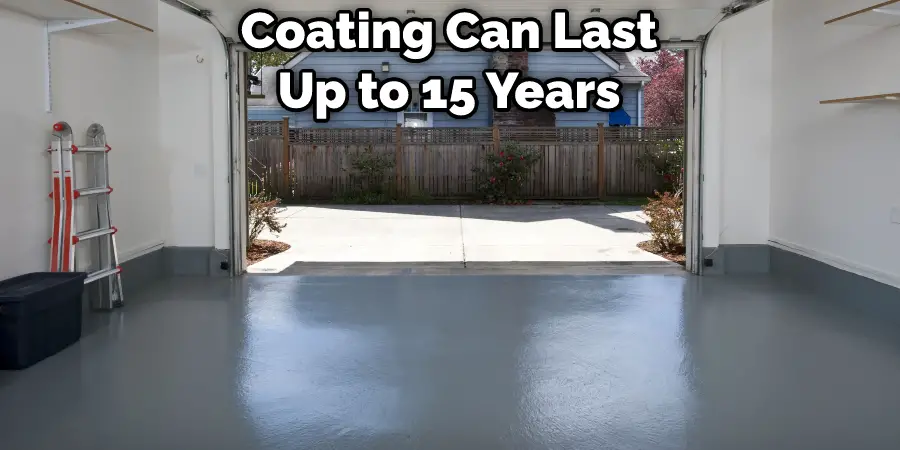
Solution 9: Aluminum Oxide Anti-slip Media
Aluminum oxide is a versatile anti-slip media that can be added to paint, latex, and oil-based coatings. It provides a tough, non-skid surface without affecting the physical properties of the coating or making it harder to clean. However, the material is not friendly to bare feet and requires frequent sweeping and cleaning to maintain its anti-slip properties. It is often added to the topcoat of a coating while it is still wet, and it can also be backrolled into the surface. Aluminum oxide can be used in residential and heavy-duty applications alike, and there are different levels of grit. Aluminum oxide is a common choice for aggressive slip resistance, and it is especially useful in places with high traffic, such as meat plants. The material is very hard, and it retains its angular profile when locked into epoxy resin. It can also be used in parking decks, as it can provide a spark-proof surface.
Using aluminum oxide as anti-slip media is best for garage floors because it lasts longer than sand and provides better slip resistance. Aluminum oxide is typically 60mesh in size, making it suitable for a garage floor Epoxy Coating project. This material is also easy to clean, so it is a popular choice among DIYers. Another option for making your garage floor less slippery is to use epoxy paint with an anti-slip additive. However, these solutions can be expensive, and the most practical solution is to avoid letting the garage floor become wet. Another option is to place non-slippery objects above the floor. However, these will look unsightly and won’t blend into the floor surface.
Solution 10: Polished Concrete Floors
Polished concrete is less slippery than unpolished concrete. It can have a glassy appearance or a matte finish. In addition, they are more durable than other flooring materials and last much longer than coatings. Polished concrete floors are a great choice for garage floors. Not only are they easier to clean, but they are also less slippery. However, there are some disadvantages to this flooring type. First of all, they can be expensive. Prices can range anywhere from $6 to $10 per square foot, depending on the amount of shine you want and the shape and size of your garage floor. You also have to factor in the cost of the polishing equipment and the time it will take to set everything up. That said, if you can afford to pay the price, polished concrete is a great choice for your garage floor.
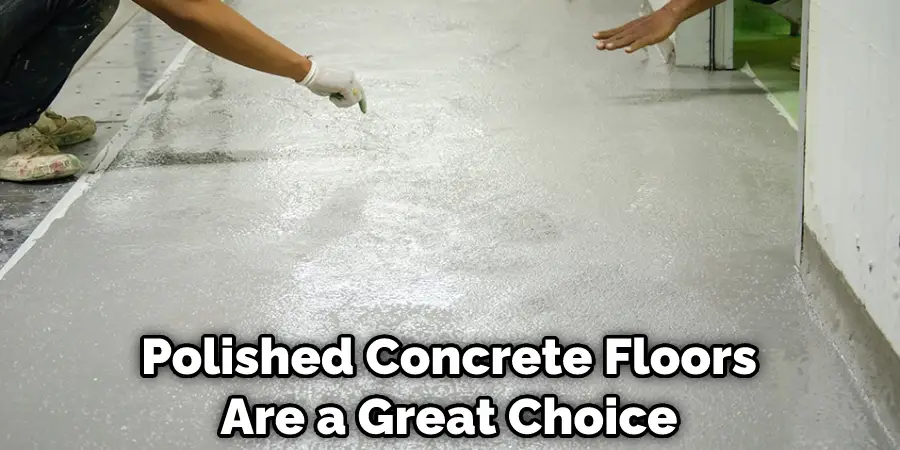
Another benefit of polished concrete is that it is stain-resistant, has good light reflectivity, and is easier to clean than other flooring materials. It is also less likely to be damaged and can last for years. In addition, it is less slippery when wet than other materials. Polished concrete can degrade over time. This happens because vehicles track in more dirt and grit from the road. The grit that the tires kick up over time can dull the finish of the concrete. If the floor is unswept, this dirt will wear away at the finish of the floor.
You Can Check It Out to Clean Grease Off Garage Floor
Frequently Asked Questions
Why is My Epoxy Floor Slippery?
There are several reasons why your epoxy floor might be slippery. The first reason is that the epoxy might not have been properly mixed before it was applied to the floor. Secondly, epoxy floors can be slippery when they are first installed. This is because the epoxy needs time to cure and harden. Once the epoxy has cured, it will be less slippery. However, if the floor is not cleaned properly, it can become slippery again. If the epoxy wasn’t properly mixed, it might not have been applied evenly, which can lead to a slippery surface. Another reason why your epoxy floor might be slippery is that it wasn’t given enough time to cure before it was used.
Are Coated Garage Floors Slippery?
Yes, coated garage floors can be slippery, especially when they are first installed. Coatings can make garage floors less slippery, but they will not make them slip-proof. This is because the coating needs time to cure and harden. Once the coating has cured, it will be less slippery. However, if the floor is not cleaned properly, it can become slippery again. The best way to make your garage floor less slippery is to avoid letting it become wet. Another option is to place non-slippery objects above the floor. However, these will look unsightly and won’t blend into the floor surface.
Is It Worth It to Epoxy the Garage Floor?
Epoxy is a good option if you can afford it and the floor is in a dry, clean, and sunny location. Epoxy is less slippery than other flooring materials, but it can be damaged over time. It is also more expensive than other flooring materials. It is important to factor in the cost of the epoxy and the time it will take to install it.
You Can Check It Out to Remove Rust Oleum Garage Floor Epoxy
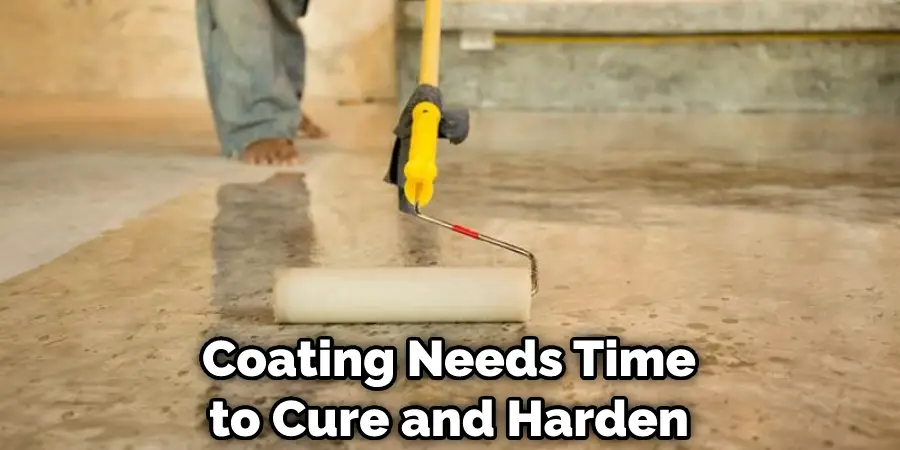
Conclusion
In conclusion, one of the best ways to make your garage floor less slippery is to apply an anti-slip coating. There are several different types of coatings available, and some are self-priming. Make sure to follow the instructions carefully, and be aware of the potential hazards associated with using an anti-slip coating. Safety Seal is a good option for inside concrete floors, and Rubber drainage mats are an excellent way to keep the floor dry and prevent accidents. If you have any questions regarding the garage floor slipperiness please don’t hesitate to contact us or you can always comment down below.

